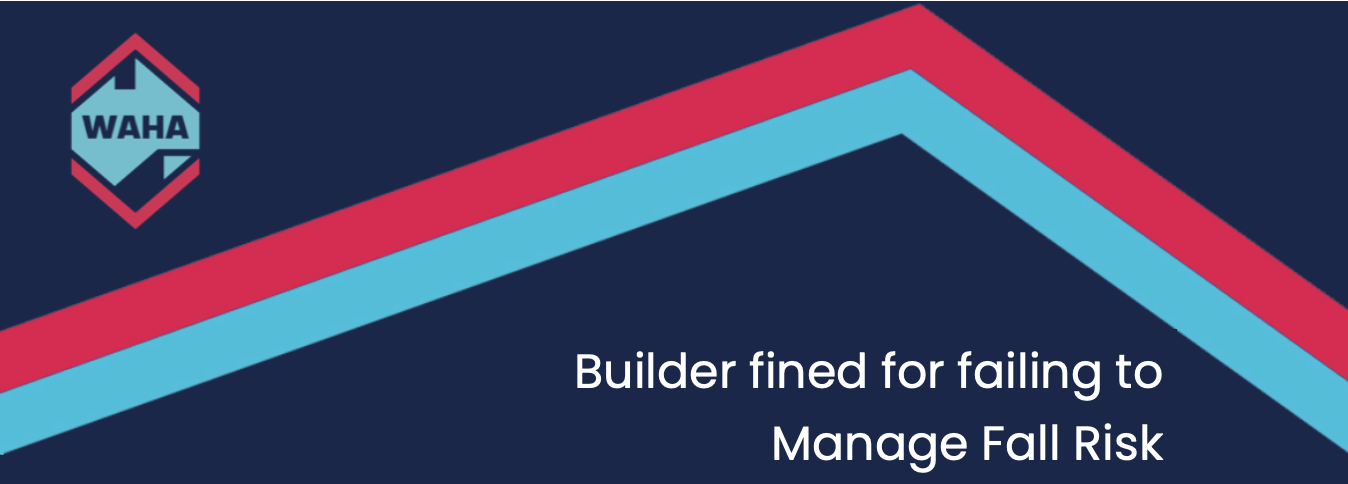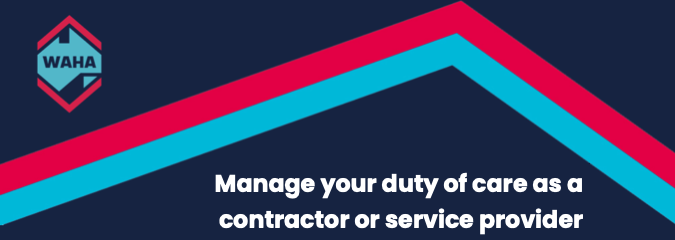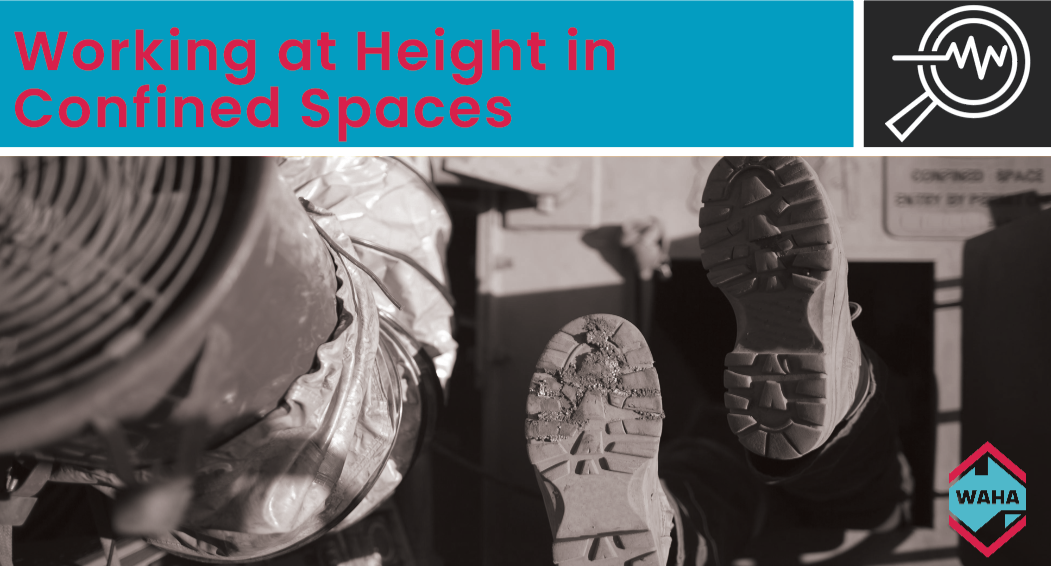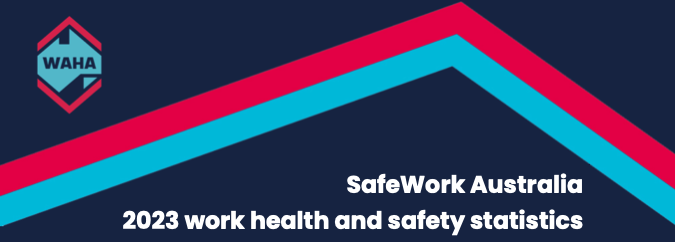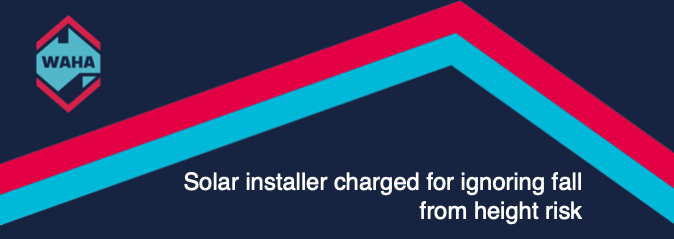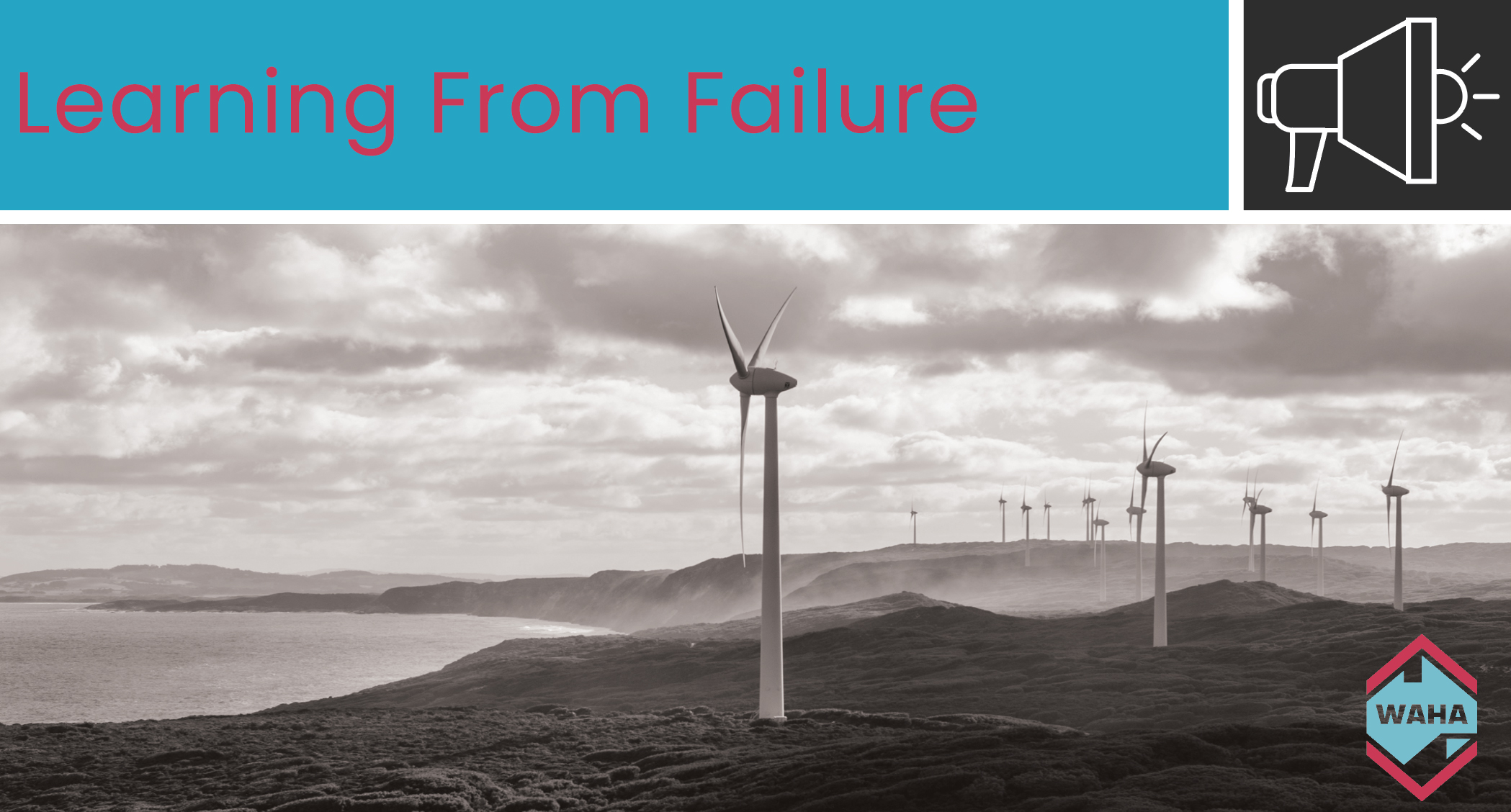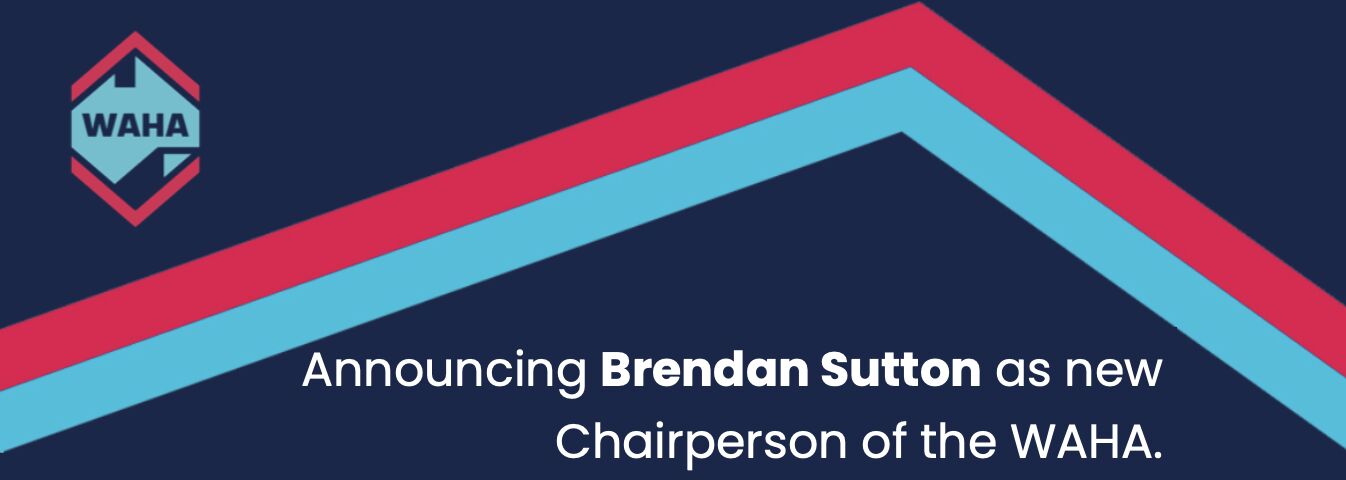Source: WAHA Member, Height Safety Engineers
Contractors and service providers occupy a unique place within the height safety ecosystem. They work in places that often need fall protection systems, while at the same time being responsible for those using those systems.
Workplace safety is not just the responsibility of a building owner, facility manager or the individual worker. Contractors and service providers, who generally employ workers to perform work at heights, also have a duty of care to their teams.
Their main role is to work with building owners and FMs to make sure that safety systems on-site are in place for workers to use. But also they need to ensure that workers have the correct skills, equipment and work methods to safely complete their job.
How this is done, when it comes to working at height, takes on a variety of different forms depending on the work being done and its location.
What is a duty of care?
Duty of care is the concept that one person is responsible for the safety and wellbeing of another. This could be at work, or in any number of other situations. A very simple way to think about it is to consider the relationship between a parent their child. The parent is responsible for making sure the child is fed, clothed, housed and education. They are responsible for their wellbeing. That’s duty of care.
In the workplace, duty of care is defined through legislation. Federally, the Work Health and Safety Act 2011 and the Work Health and Safety Regulations 2011, outline where and how duty of care is created and enforced while at work. In NSW, these federal laws are supplemented by the state’s Work Health and Safety Act 2011 (NSW) and the Work Health and Safety Regulation 2017 (NSW).
Under all this legislation, the responsibility for managing safety rests with the person conducting a business or undertaking (PCBU). Both the NSW and federal regulations state:
“A person conducting a business or undertaking at a workplace must manage… the risks to health and safety associated with a fall by a person from one level to another that is reasonably likely to cause injury to the person or any other person.”
On a job site, especially a larger or more complex one, there can be several different PCBUs. Each of them will be responsible for different people and tasks.
Who can be a PCBU?
Depending on the job, and any particular person’s role within it, the person conducting a business or undertaking (PCBU) could be just about anyone. There can even be more than one PCBU. This is certainly the case when it comes to working at heights on buildings, especially ones under construction.
On a typical building site there would be a principal contractor, contractors, subcontractors and workers. Depending on the task being completed, everyone except the worker could be a PCBU under the law. And even the worker needs to take responsibility to ensure they are carrying our their tasks in a safe manner.
The principal contractor would be mostly responsible for providing a safe place of work. This could take the form of providing safe access and fall protection systems in areas where a worker was at risk of a fall. These would be things like a roof or the edge of a void. The principal contractor would be a PCBU over the entire site.
A contractor coming onto the site to complete a specific piece of work – installing a gutter, completing painting, doing the electrical work or putting together the HVAC system – would be a PCBU over that specific task and the people completing it.
It would be their responsibility for ensuring that the workers doing the actual work have safe work methods to follow, as well as having the correct equipment and are trained appropriately. They would also need to liaise with the principal contractor about site safety matters, like ensuring the site has the appropriate safety systems in place to allow workers to be protected while completing their tasks.
This would also apply to any sub-contractors engaged to work on the project as well.
Although an individual worker is not considered a PCBU under legislation, they are still responsible for their own safety. The onus is on an individual worker to ensure they are following safety system manuals and safe work methods correctly. They should also be using the correct PPE, if required, and generally be aware of what risks may exist on the site.
Most importantly, however, every person – from the principal contractor down to the individual worker – should be willing to listen to and enact changes to a work site to improve safety. The further removed an individual is from the work being completed, the easier it is to not consider what the real risks of injury may be. It is critical that any safety-related feedback given from those completing work on site be received and acted upon.
Role of contractors in the contractual chain
Contractors fulfil a key role in building, construction and maintenance work. They are the important links in the contractual chain between a building developer and the individual workers that complete tasks on site.
While a principal contractor is responsible for delivering a completed project, contractors and sub-contractors are engaged to perform specific tasks. Often these tasks are focussed around certain areas of work where a specific skillset is required.
For example, a Tier One contractor might be engaged to deliver the construction of a new hospital. Acting as the principal contractor, they would then engage a number of contractors and sub-contractors to deliver certain aspects of the project. A bulk earthworks company would complete the earthworks, a plumbing contractor would complete the pluming works for water supply and sewage removal, an electrical contractor would complete the electrical and data-cabling works.
Within those contractors, sub-contractors with even more specific skillsets may also be engaged. For example, the electrical contractor may engage a sub-contractor that specialises in working with high-voltage main electricity lines. They could also engage a sub-contractor to complete solar panel installation, and a third one to do backup generator installation and integration.
Ensuring workplaces are safe
While every level of the contractual chain – from principal contractors down to individual workers – has different responsibilities to making workplaces safe, there is one important thing they can do that makes the biggest difference: communication.
Having open and honest communication about safety issues, mitigation and risks is the single most useful thing a site can have. Everyone should be active in creating and maintaining clear channels of communication about safety issues at a workplace.
One aspect of communication that should also be taken onto account is the multi-cultural makeup of the workforce. It cannot be assumed that English is everyone’s first – or only – language, or that everyone has the same level of literacy. Being aware of the cultural and linguistic diversity that most likely exists at a workplace is vital to ensuring that safety messages are fully understood.
Developing safe work procedures
For contractors, ensuring that workers have a comprehensive set of safety system manuals and safe work procedures is part of their responsibilities as a PCBU at a workplace.
System operating manuals, site checklists and other documents related specifically to a worksite should come from the entity responsible for the system. This could be a building owner, facility manager or a principal contractor, depending on the type of site being accessed.
These documents should thoroughly detail what sort of safety systems have been installed, what correct usage of them is, what the limitations of the system are and what equipment is needed to safely use the system.
Having these documents, and making sure they have been reviewed and understood by the workers on site is just as critical contractors as it is for building owners. When it comes to responsibility for safety, this is one area where there can be overlap in the duties of care held by different parties. Those responsible for work sites need to check that workers understand how to use the safety systems correctly, while contractors and sub-contractors should be ensuring that safety systems on site meet the needs of their team so they can perform the work.
Contractors are responsible for providing their workers with safe work procedures and risk assessments to instruct them on how their work is to be performed in the safest manner practicable. These documents would include items like procedures for carrying materials, methods to complete work, assessing safety and risks during the work and more. Generally any safe work procedures should be read in conjunction when the site access manuals. This helps make sure that all safety bases are covered prior to work commencing.
In the event that issues are discovered prior to work commencing, or further information being needed, workers should be empowered by their employer to voice these concerns and know they will be acted on. It should be unacceptable for workers to be placed in a position where they have identified a safety risk but have to continue working in that area. Safety procedures and processes are only useful if workers have the ability to decline carrying out work in unsafe areas.
Training your team
On an individual level, each team member should be equipped with the skills and knowledge required to safely go about their daily work. For contractors and service providers, sending your team for accredited training, and then regular refresher courses, is a simple way of working towards fulfilling your duty of care.
For each team member, there are three effective levels of training that they should complete before starting work.
The first is a general safety induction. In Australia, this takes the form of the nationally-accredited CPCCWHS1001 Prepare to work safely in the construction industry course. This is often referred to colloquially as a white card. Holding your white card is often a compulsory requirement before a worker can enter a job site.
Secondly, there is task-specific training. This could be something along the lines of height safety training, for those working at heights, or confined space training, for those working in pits, tanks, trenches and other similar places. This training equips workers with a basic set of skills for identifying and mitigating common safety risks.
Finally, there is site-specific training, or a system induction. This type of training is related to the specific safety systems the workers will be using out on site. It is a guide to using the system and assist in making workers aware of how the system is to be used correctly, as well as seeing first-hand what limitations the system may have.


